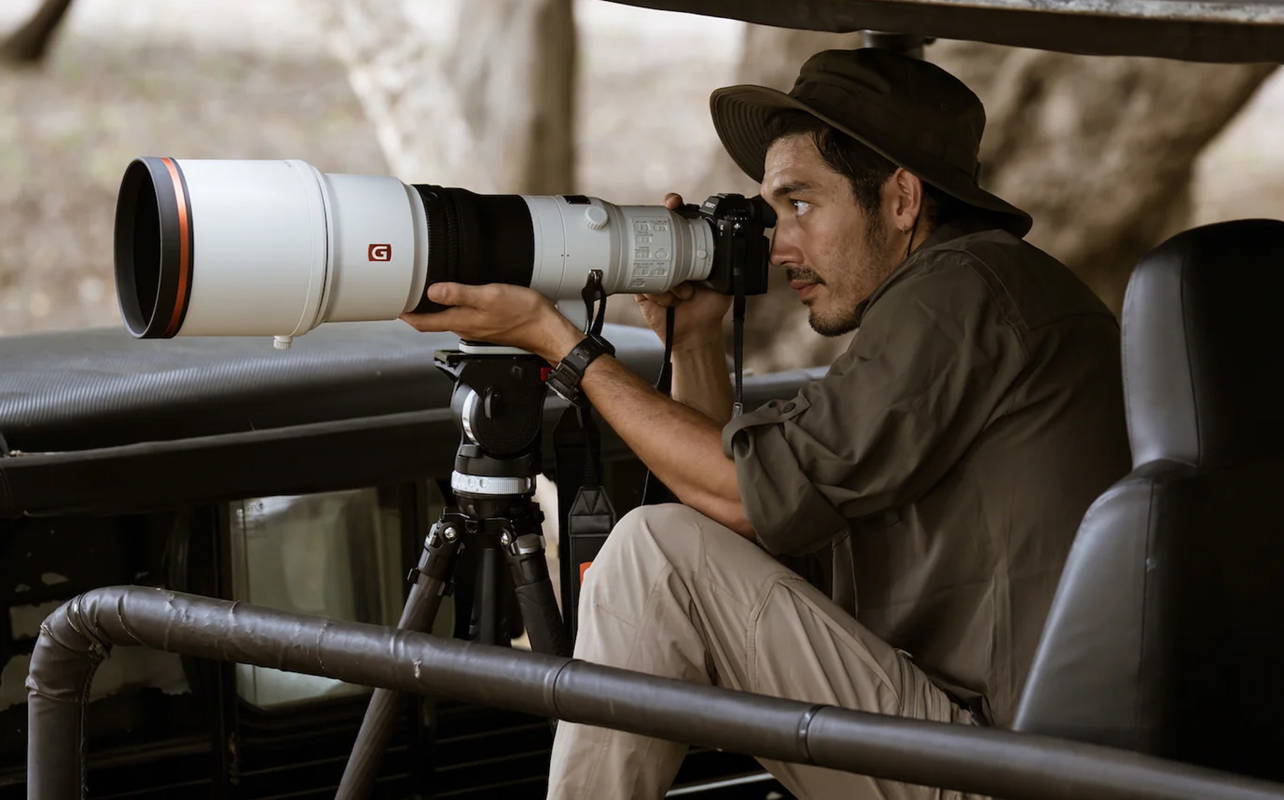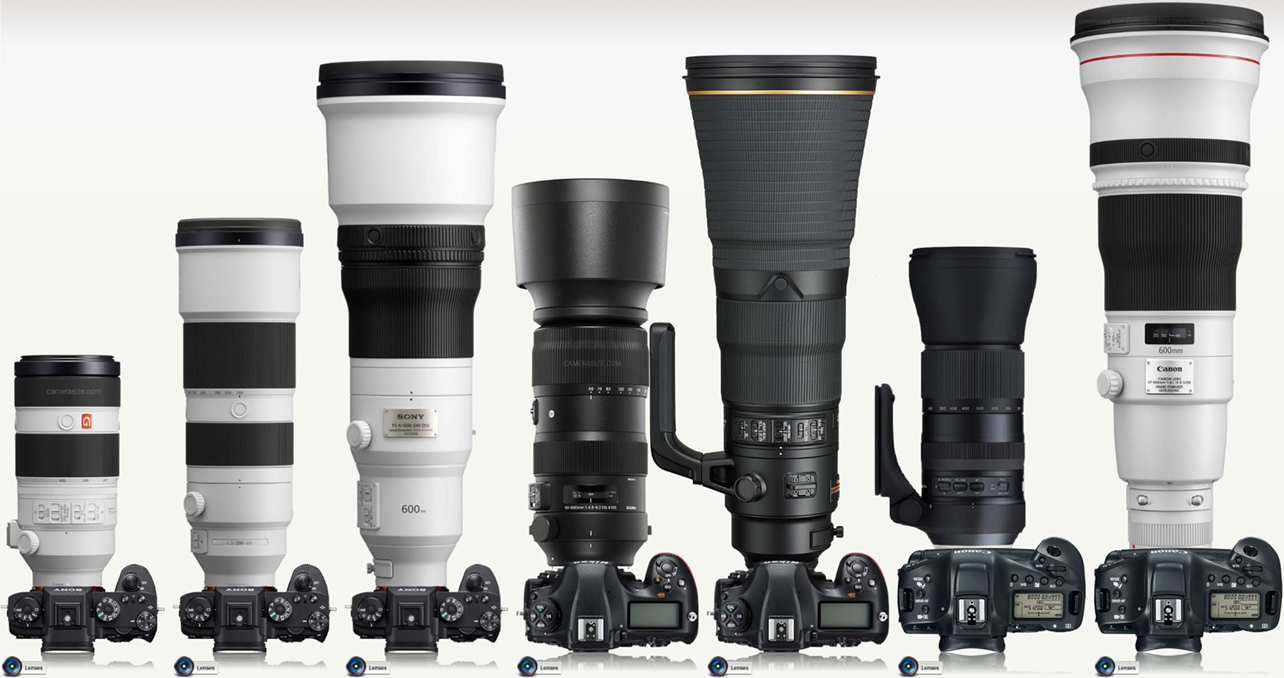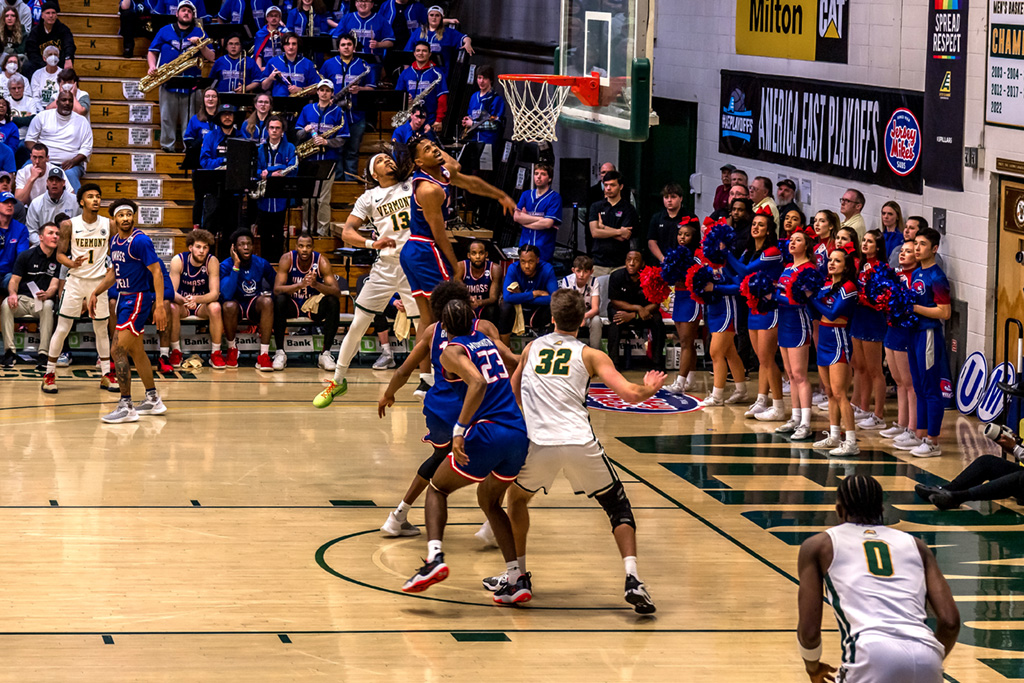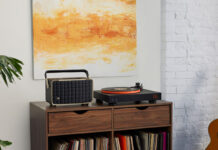
In photography, choosing the right lens can make all the difference. Camera bodies are always important, but it’s the lens that truly shapes how your image turns out—from how close you can get to your subject, to how much of the background you blur. One of the most versatile and powerful options in a photographer’s toolkit is the telephoto lens.
But what constitutes a telephoto lens, exactly? And how do you know if you need one?
In this guide, we’ll walk you through the basics of how telephoto lenses work, when to use them, the different types available, and how to choose the right one for your photography needs. Whether you’re new to photography or looking to expand your lens toolkit, you can open up new creative possibilities when you start to use one.
What is a telephoto lens?
A telephoto lens is any camera lens with a focal length longer than a standard lens. There is no real consensus as to where that starts but many that go beyond 200-300mm typically start at around 70mm. The advantage in having that extended focal range is you can magnify distant subjects to appear closer in the frame without physically moving toward them.
Telephoto lenses are different from standard or wide-angle lenses, which have shorter focal lengths and capture more of the scene. A standard lens (around 35mm to 50mm) mimics what the human eye naturally sees, while a wide-angle lens (under 35mm) is better for landscapes or cramped interiors. In contrast, telephoto lenses narrow the field of view, pulling far-off subjects closer to your eye in the frame.
To explore how telephoto lenses compare to other types, check out our complete guide to different types of lenses in photography.
How do telephoto lenses work
Telephoto lenses use a series of internal lens elements and groups to magnify distant subjects. What makes them unique is their optical design, which allows for a long focal length without requiring a physically long lens.
By arranging the lens elements in a specific way, manufacturers are able to create a compact form factor that still delivers a powerful zoom. This design uses what’s known as a “telephoto group” of lenses to extend the light path, essentially bending the light to allow a shorter barrel length.
The result? You get magnification and reach without needing a lens the size of a baseball bat.
Types of telephoto lenses

Telephoto lenses come in different focal length ranges, each best suited for specific photography needs. Here’s how they break down:
Short telephoto (85mm–135mm)
This range is perfect for portrait and street photography. Short telephoto lenses allow you to stand a comfortable distance from your subject while still filling the frame. They also produce a flattering compression effect and beautiful background blur (bokeh), which is ideal for isolating your subject. These types of lenses are also popular for concerts, performances, and sporting events where distance is a factor in getting closer to the action you want to capture. However, if the subject is too far for 135mm to isolate and get close up, you may need to consider more length.
Medium telephoto (135mm–300mm)
These lenses offer greater variability for sports, wildlife, and event photography. They give you enough reach to capture subjects from the sidelines or at a distance without disturbing them. Medium telephotos are popular for school concerts, outdoor sports, and travel photography where you need more versatility. The event or situation can impact how close you can get. For instance, shooting a hockey or basketball game will be very different than a football or soccer game where the playing surface is considerably bigger.
Super telephoto (300mm and above)
When you need to capture something far, far away—like birds, wildlife, or celestial objects—super telephoto lenses come into play. They offer extreme reach and magnification but are usually larger, heavier, and more expensive. They also require a higher degree of stabilization to compensate for the addtional size and weight, which is why tripods are common to set them up. These are the lenses of choice for professional sports and wildlife photographers.
Telephoto vs. zoom lenses
What’s the difference between a telephoto lens and a zoom lens? It’s a common question beginners ask and it has a pretty straightforward explanation.
Understanding the difference
A telephoto lens refers to any lens with a long focal length—as in how far the lens can reach. In contrast, a zoom lens refers to any lens that can change focal lengths, regardless of whether it’s wide-angle or telephoto. This means you can have a telephoto prime lens (with a fixed focal length, like 200mm) or a telephoto zoom lens (with a variable focal length, like 70–200mm).
Here’s a quick comparison:
| Lens Type | Definition | Example | Flexibility |
|---|---|---|---|
| Telephoto Prime | Fixed long focal length | 135mm | Sharper, lighter, often faster aperture |
| Telephoto Zoom | Variable focal length in telephoto range | 70-300mm | More versatile, slightly heavier |
So, when people ask “what is a tele lens” or “what is telephoto,” they’re often referring to these long-reaching lenses, whether fixed or zoomed. The two terms—telephoto and zoom—are often interchangeable in photography parlance but they aren’t exactly the same thing from an optical perspective.
Benefits of using telephoto lenses

Telephoto lenses aren’t just about getting closer. They offer several unique benefits:
Shoot from a distance
You can photograph your subject without physically moving toward it. This is ideal for wildlife photography, candid portraits, and live events where proximity isn’t always possible.
Compression effect
Telephoto lenses visually compress a scene, making background elements appear closer to the subject. This effect is popular in portraiture and landscape photography, as it adds a dramatic sense of depth and intimacy. For example, objects or elements in a scene will appear to be closer together, an effect even more noticeable in a city or wherever there is architecture in the background.
Shallow depth of field
Telephoto lenses make it easier to blur the background and isolate the subject, especially with wider apertures. This makes them a top choice for creative photographers who want that soft, dreamy look. Portraits often benefit from this because a shallower bokeh effect means there’s less of a chance part of a person’s face or body will be blurred or out of focus if slightly ahead or behind the image’s focal point.
For more on improving your photography with techniques like these, visit How to take great photographs: Tips for better photos every time.
Common uses of telephoto lenses
So where do telephoto lenses really shine? Here are a few of the most popular uses:
Portrait photography
Short telephoto lenses like 85mm or 105mm are widely used for portraits. They produce flattering facial proportions and help you achieve smooth background blur. They also limit the chances of lens distortion coming into play when perspective needs to be more pleasing and accurate.
Wildlife and bird photography
Medium and super telephoto lenses are perfect for photographing animals in their natural habitat, allowing you to keep a respectful distance while still capturing stunning detail. Some animals can react with fear when seeing a bigger telephoto lens because of how it stands out and reveals your presence. Some professionals use different methods to camouflage the lens but you may not have to consider that if it’s not your primary creative pursuit.

Sports and action photography
Whether it’s soccer, track and field, or motor racing, telephoto lenses let you zoom in on the action from the stands or the sidelines to capture the big moments. The challenge is that a longer focal length limits how much you can pack into a frame, so in trying to keep up with the action, you run the risk of blurry or poorly framed images. With time and practice, however, you will only get better at taking photos this way.
Landscape photography
Though wide-angle lenses are more common, telephoto lenses can be used to isolate specific elements in a scene—like a distant mountain peak or a patch of colourful trees—and compress the background for added drama. Sunsets are also a good one, especially if you can isolate the setting sun with an interesting subject in front of it. Telephoto lenses can make landscape scenes look more dramatic.
Tips for using telephoto lenses
Using a telephoto lens comes with a learning curve, but with a few practical tips, you can get great results:
Use faster shutter speeds
The longer the focal length, the more noticeable camera shake becomes. Using faster shutter speeds helps minimize blur, especially when shooting handheld. Since a lot of telephoto photography is based on freezing action in one form or another, stability plays an integral role in delivering high-quality images.
Stabilize your camera
A tripod or monopod can make a big difference in sharpness, particularly with heavier lenses or in low-light conditions. The bigger the telephoto lens, the more that it’s the lens itself you have to mount instead of the camera body. If you do explore options in the camera tripod collection on sale, make sure that the tripod can handle the combined weight of both your camera body and telephoto lens.
Watch your focus and depth of field
With telephoto lenses, the depth of field is often very shallow. Make sure your focus is spot-on, especially for close-up portraits or distant wildlife shots.
Choosing the right telephoto lens
There are a few key factors to consider when selecting your first or next telephoto lens:
- Focal length: Match your needs. Portraits? Go for 85mm or 135mm. Wildlife? Aim for 300mm or more. Sports? A 100-400mm range is good, though higher is fine, too.
- Aperture: A wider aperture (like f/2.8) lets in more light and gives better background blur, but usually comes at a higher cost.
- Size and weight: Super telephoto lenses can be heavy. If portability matters, look for more compact options or zoom lenses.
- Budget: Telephoto lenses range from budget-friendly to premium. Make sure to balance performance with affordability for your goals.
Your next shot is within reach
A telephoto lens is a powerful tool that helps photographers bring faraway subjects closer to capture stunning details and create unique visual effects. Whether you’re into sports, portraits, or wildlife photography, adding such a lens to your kit can dramatically enhance your creative range.
Now that you know the tele lens meaning, how it works, and what it’s good for, you’re ready to start experimenting. The world of telephoto photography is vast—and your next great shot might be just a zoom away.
Frequently asked questions (FAQ)
Is a telephoto lens good for everyday photography?
That depends on what you like to shoot. Telephoto lenses are perfect for capturing moments without getting too close—ideal for candid portraits, pets, or capturing your kids playing. However, they may not be the best for tight indoor spaces or travel due to their size and weight.
Do I need image stabilization with a telephoto lens?
It’s highly recommended. Camera shake becomes more noticeable at longer focal lengths, especially if you’re shooting handheld. Lenses with built-in image stabilization (often labeled IS, VR, or OSS depending on the brand) help reduce motion blur and improve sharpness. Still, a tripod can make a noticeable difference the further you want to go.
What’s the best telephoto lens for beginners?
A good starter option is a 70–300mm telephoto zoom lens. It’s versatile, relatively affordable, and gives you the reach to explore different styles of photography—from portraits to wildlife. Brands like Canon, Nikon, Sony, and Sigma all offer solid entry-level models.
Can I use a telephoto lens for video?
Absolutely! Telephoto lenses can produce cinematic shots with a shallow depth of field and help you focus on distant subjects. Just be mindful of stabilization—using a tripod or gimbal can make a big difference in keeping footage steady.
This article was drafted using AI technology and then reviewed, fact-checked, and revised by a member of our editorial team.





